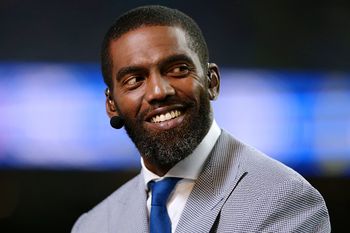
Using Rituximab in Non-Hodgkin Lymphoma
Transcript:
Loretta J. Nastoupil, MD: Partway through your treatment I changed things. I changed the IV rituximab to subcutaneous rituximab, something they call Hycela. What was your experience with that?
Whitney Neighbors: Well, I was not very enthusiastic about this. The regular IV was delivered straight into my port with regular medication. It took a long time to get the rituximab. It took about 4 to 4.5 hours the first time I was treated with the medicine. The second round also took about 4 hours. It just took a long time. But it was convenient. It wasn’t any more uncomfortable than just getting my port accessed, so that was pretty easy.
When we talked about switching to the subcutaneous administration I was very, very anxious about it. You described that they stick a needle into your abdomen and that treatment goes on for 5 to 7 minutes. All I could think about was an experience when I had to do this to my poor dog. She had to have a subcutaneous treatment and it made this big bubble on her back. You said, “That’s not what this is going to be like.”
So I took in what you said and did some more research. At my next appointment, at my Fast Track appointment, I really quizzed the nurse. “What all is going to happen?” “Have you done this before?” “What do you do? Can you walk me through, step-by-step, what’s going to happen to me?” She was very sweet. She was trying not to make fun of me because I was so afraid. But because of that, my anxiety came down quite a bit. And so, after my conversations with her, I decided to use the same numbing treatment that I use for my port access. My thoughts were that if it worked there, it couldn’t hurt to try on my stomach.
And so, I put the same numbing cream on my abdomen and made it through the administration of the rituximab. It was so much easier. It took 5 to 7 minutes compared to 4 to 4.5 hours. Your whole day is different because you’re not in there for 6 hours. You’re in and out within 2, 2.5 hours. Now I prefer this. I was glad that you presented it to me despite my hesitation in the beginning. It was much easier to receive treatment this way. Quite frankly, I actually felt better.
One of the things that I noticed with being on a drip for that long was that I got very swollen. I would retain fluid for about 3 to 4 days. With this application, I don’t have that same retention where everything is stiff and full. I don’t have that with the subcutaneous injection. Reluctantly, I admit that it’s preferred to do it that way. Once we cleared the hurdle so that I could, I’m glad we did so.
Loretta J. Nastoupil, MD: That’s a very typical experience. Again, what I appreciate about you the most is that you do your own research. I present a concept or an idea and I expect you to go and look into it further. I expect you to be in agreement with this plan. I get similar questions when I pose this. It’s important to note that we have to do the IV rituximab first. We have to make sure that patients can tolerate that. Most patients will have an allergic reaction to rituximab. We try to warn people that even though we describe it, until you really experience it, it’s something that is unique. You can have full blown itching and hives, and it can take many, many hours. You were fortunate enough to go through the IV rituximab without serious infusion reactions. We have to make sure that this is true before we switch. That was one of the things about you that made you a great candidate. You did not have a significant reaction to rituximab.
The other reason why I thought it would be a good fit for you, and this is where physicians are sometimes a bit patronizing… You’re a young, energetic person who has a life outside of time spent with me. I felt that if I could get you to that life faster, meaning spending less time with us, that would be appreciated.
For a patient, during a typical day, you have labs an hour to 2 hours before your visit with me. We spend anywhere from 10 to 30 minutes discussing things. You go from me to the infusion center. Sometimes there’s a many-hour wait for that. And then, as you mentioned, there is the infusion time for the rituximab. You get pre-meds 30 minutes beforehand. Sometimes it takes 4 to 6 hours for the infusion. That can be shortened with subsequent infusions, but it still takes several hours. Then you get the chemotherapy after that. I’ll monitor you sometimes an hour to 2 hours later to make sure that you’re fine before they let you leave.
When you start adding up all of those hours, it is a very full day. And so, again, if I could shorten that down substantially by giving you an injection, I would think that you would like that. Now again, as you mentioned, it is a needle, and it is something that is given subcutaneously—so, below the skin. Some of my patients object to that, and that’s absolutely fine. I understand that you are poked and prodded so many times through this journey. The idea of another needle can sometimes be overwhelming. You came up with an ingenious solution to apply the numbing cream to the area, just like you would to a port, to help overcome that.
It’s also important to know that the studies did have a built-in control. Every patient started with IV rituximab, and they all switched over to the subcutaneous rituximab. So, an individual patient experienced both. Then they provided feedback as to what their preferred route was. The vast majority of patients actually preferred subcutaneous rituximab.
There are probably many factors related to this. As you mentioned, there is the time spent outside of a hospital setting or a clinic setting. There’s much less fluid. We’re talking about a syringe full of fluid as opposed to a full liter bag of fluid that goes along with the rituximab. There may be other things that are even hard for us to measure, but I do think that if there is an opportunity for someone, this should be considered. Right now, the patients who we’re considering this for are those who are getting single-agent rituximab for an indolent lymphoma or are getting rituximab in combination with CHOP [cyclophosphamide, doxorubicin hydrochloride, vincristine sulfate (Oncovin), and prednisone] chemotherapy.
Transcript Edited for Clarity




